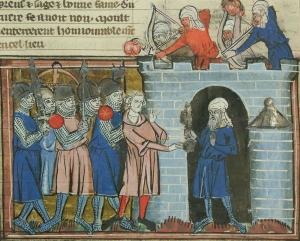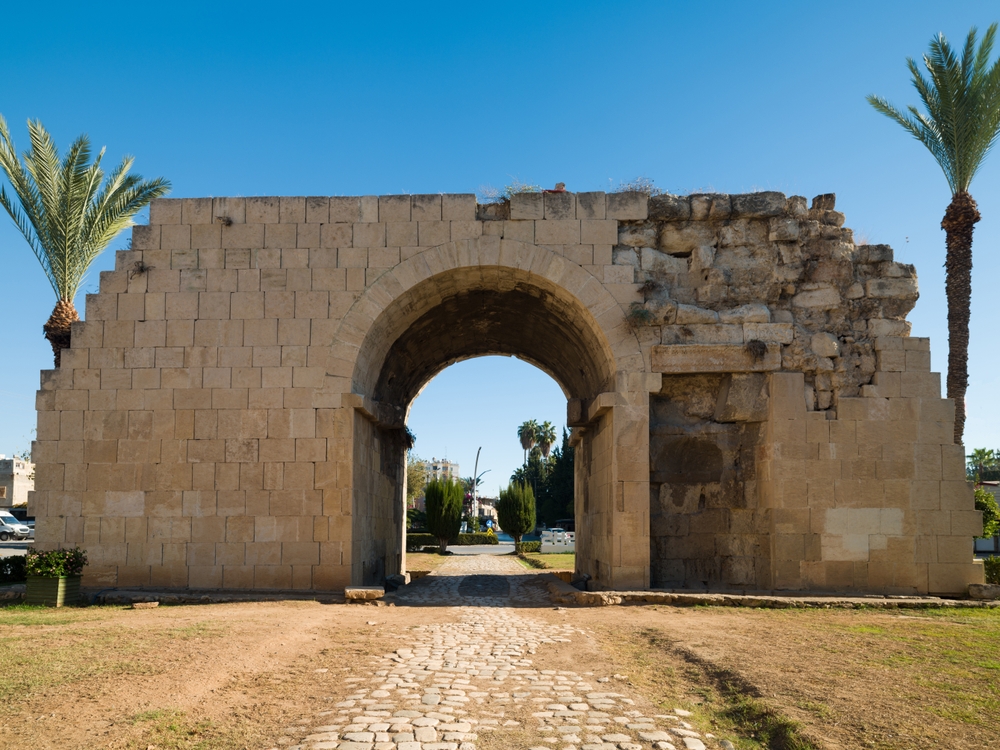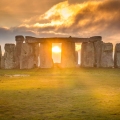The warm breeze of Tarso still carries echoes of love, power, and transformation. It was here that Cleopatra and Mark Antony first met, igniting one of history’s most fabled romances. It was also the birthplace of Saul of Tarsus—later known as Paul—whose teachings helped shape early Christianity. But beyond these legendary figures, Tarso is a mosaic of myths, cultures, and religions that make it a compelling destination for history enthusiasts and pilgrims alike.
Mythical Origins of Tarso
The origins of Tarso dissolve into the haze of mythology. The river that flows through the city, known in antiquity as the Cydnus, was once revered as a divine entity by its earliest settlers. Another legend connects the city’s name to Pegasus and Bellerophon, the Greek hero who, after losing control of his winged horse, fell onto the Cilician plain and injured his foot. The name “Tarsos” is said to derive from the Latin word for the sole of the foot, tarsus.

Other accounts credit the city’s foundation to heroic figures such as Perseus, the slayer of Medusa, or even the demigod Hercules, who was linked to the Cilician deity Sandon. This association is evident in ancient coins bearing depictions of the Greek hero, a testament to Tarso’s deep mythological roots.
A City of Knowledge and Prosperity
From its origins in the Hittite civilization, Tarso grew into a significant hub of the ancient world. Assyrian records from the 9th century BCE mention the city, which later became part of the Persian Empire before falling to Alexander the Great in 333 BCE.
Under Roman rule, Tarso flourished. It served as the administrative center of Cilicia and a thriving commercial hub with extensive Mediterranean trade links. With a population exceeding 450,000, the city rivaled Athens and Alexandria as a center of learning. Prominent Stoic philosophers such as Diogenes and Antipater taught here, and its library, housing 200,000 volumes, was among the most important of antiquity.
Mark Antony, captivated by Tarso’s splendor, chose it as the setting for his first meeting with Cleopatra in 41 BCE. According to accounts, the Egyptian queen arrived aboard a gilded barge on the Cydnus River, enveloped in fragrant perfumes that mesmerized the Roman general—an encounter that would shape their fateful relationship.
A Spiritual Crossroads
Beyond its political and intellectual significance, Tarso became a focal point for diverse religious traditions.
- Paul of Tarsus and Early Christianity
Saul of Tarsus, later known as Paul, was born in this city and received an education steeped in philosophy and theology. His conversion and missionary journeys were instrumental in the spread of Christianity. Today, the Church of St. Paul and the Well of St. Paul attract visitors tracing his legacy.
- The Cave of the Seven Sleepers and Islamic Tradition
According to Islamic tradition, Tarso is home to the Cave where the Seven Sleepers, mentioned in the Quran’s Surah Al-Kahf, sought refuge. Over centuries, this site has been a place of devotion shared by both Muslims and Christians. The city also houses the tomb of the prophet Daniel, adding to its religious significance.
- Ancient Cults and Pagan Traditions
Long before Christianity and Islam, Tarso was a center of polytheistic worship. Archaeological remains reveal temples dedicated to Zeus and Apollo, underscoring the city’s multicultural spiritual landscape.
From the Middle Ages to Modern Times
After the fall of the Roman Empire, Tarso became a contested stronghold between the Byzantines and Muslim caliphates, eventually flourishing under the Abbasids. During the Ottoman period, it prospered as an agricultural and trade center, noted in the travelogues of Evliya Çelebi and cartographer Piri Reis.

The city also served as a waypoint for Christian pilgrims traveling overland to Jerusalem, many of whom stopped to venerate sites linked to Paul.
In the 19th century, Tarso experienced an economic revival through its connection to global trade via the port of Mersin. Briefly occupied by the French during World War I, it was later fully integrated into the Republic of Turkey.
Tarso Today: An Open-Air Museum
Exploring Tarso is like walking through history. One of its most famous landmarks, Cleopatra’s Gate, is traditionally believed to be the point where the Egyptian queen entered the city. This well-preserved Roman gateway leads into a historic district filled with archaeological treasures.
At the city’s heart lies the ancient Roman road, one of the oldest surviving thoroughfares in the world, complete with an advanced underground drainage system. Walking along its timeworn stones evokes the grandeur of a city that once bridged East and West.
For pilgrims, the Church of St. Paul remains a site of historical and spiritual interest. The medieval structure stands as a testament to Tarso’s role in the early Christian movement, while the nearby well—believed to have belonged to Paul’s family—continues to draw visitors seeking its storied waters.
Tarso’s Islamic heritage is equally prominent. The Ulu Camii (Great Mosque), one of the region’s oldest, and the Tomb of Daniel, venerated by both Christians and Muslims, reflect the city’s layered history. These religious sites coexist with remnants of ancient pagan worship, such as the ruins of Greco-Roman temples.
Beyond its historical wealth, Tarso also offers striking natural beauty. The Tarso Waterfall, set amid lush greenery, provides a serene escape, while the Karabucak Forest invites exploration of the region’s diverse flora and fauna. For those seeking a more enigmatic experience, the Taşkuyu Cave reveals stunning rock formations sculpted over millennia.
Today, Tarso’s rich past and evocative atmosphere make it an unmissable destination for those drawn to history, mythology, and spirituality. In every stone and street, the city whispers stories of emperors, philosophers, and pilgrims—waiting to be discovered.





